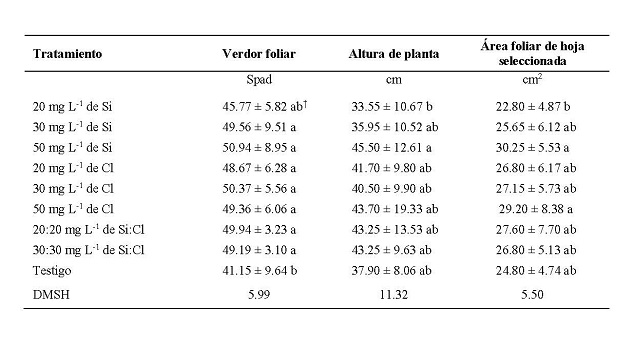Silicon and chlorine on growth, yield and postharvest quality of cucumber and tomato
DOI:
https://doi.org/10.28940/terra.v40i0.994Keywords:
°Brix, greenness, height, pHAbstract
An increase in photosynthetic capacity, a decrease in transpiration rate, greater growth of plants and increase in yields and quality of crops are effects caused by silicon (Si) and chlorine (Cl). These beneficial effects caused by both elements depend on species and genotypes within a species. Therefore, the objective of the research was to determine the effect of silicon and chlorine, individually or in combination, as well as which are the most effective doses in growth, yield and postharvest quality of cucumber and tomato. The cultivars ‘Paraíso F1’ and ‘tomate F3’ were sown, watered every 24 h and fertilized with 200 kg ha-1 of N and 2 L ha-1 of Micro-Min foliar (20-30-10) on the 36th and 56th day after planting. In both experiments, a randomized complete block design was established, managed in drip irrigation. Treatments consisted of 20, 30 and 50 mg L-1 of Si or Cl and combinations of 20:20 and 30:30 mg L-1 of Si:Cl, plus the control. The highest dose of Si and the three doses of Cl or two of Si:Cl were more effective to induce growth in cucumber, although in regard to yield, the most suitable were the two highest doses of Si and the three of Cl. In tomato, the lowest dose of Cl induced a slight increase in leaf greenness, the two nutrients decreased height, and the highest dose of Si:Cl was more effective to slightly increase the leaf area, however, the yield did not increase. With regards to total soluble solids, the highest dose of Cl and the lowest combination of Si:Cl caused a better response in cucumber; however, in tomato only the lowest dose of Cl caused the highest response.
Downloads
Publication Facts
Reviewer profiles N/A
Author statements
- Academic society
- Terra Latinoamericana
- Publisher
- Mexican Society of Soil Science, C.A.

















